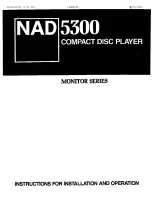
2
Mark up (drill and file out) the aileron servo cable access hole in the wing saddle, with the centre about 30 mm
behind the wing leading edge. This hole serves also as the aileron servo cables exit.
The hole must be oval and
as small as possible
, about 12 mm wide and 18 mm long. A large hole and/or a hole with sharp edges would
weaken the pod in this area, substantially.
Cutting the boom to length.
Roughen the rear of the Pod using fine sandpaper. Trial fit the boom and if not very snug, carefully
shorten the boom by small amounts until a nice snug fit is obtained. Then cut the rear of the tube to
length, as shown on the drawing.
WARNING: DO NOT GLUE THE BOOM TO THE POD IN THIS STAGE YET!
Cut a slot in the fin 28 mm deep, approx. 8 mm wide
– check the width, so that it fits onto the boom end neatly.
Take the rudder and elevator servos. Make up the opening for the servos in the balsa servo tray. Fit the floor with
the ply cross pieces, drill holes for the servo fastening screws and install the complete tray in place.
For the pod-
side walls strength it is important to mount the servos on the servo tray provided.
DO NOT omit the servo
tray as it plays important structural role in fuselage resistance against the centrifugal forces during the
launch
(the tray serves as the shear web, the fuselage sides are the “spar strips”).
Make the canopy lock of double piano wire 0,8 mm. Bend to shape, the ends meet in the middle of the length of
the lock. CA dip glue the lock wire to the hatch in the middle, spray CA activator. Do not use much CA, as it can
get hot and warm the canopy during the hardening.
Secure with epoxy soaked rectangle of carbon cloth (see the procedure for the wing joiners).
Using a fine file, make small notches in both ends of the hatch opening, so that the lock wire slots in and can not
shift sidewise.
Wing
The foam colors can vary according depending on the manufacturer and does not affect its properties.
VERY IMPORTANT WARNING: NEVER touch the wing / stab surface with nitrate base solvent. The skin is
slightly porous and the solvent would definitely damage the foam core!!!
For the same reason do not use common CA glue for the wing / stab assembly.
The wing is supplied in two parts. Test to make sure the wing servo plugs fit through the access holes in each
wing. If they don't fit, carefully drill out the holes to fit.
Mark position of the two mounting screws on the root ribs and make up small half-round notches with rat-tail file
(2 in each panel).
Check the fit of the wings at the correct dihedral. If they are not a neat fit , carefully sand each wing root so the
two halves fit perfectly together. Use good 5 minutes Epoxy to glue the wing parts together. The dihedral of each
panel is 6 deg. With one wing panel laying flat on the building board, the second panel is supported 155 mm at
the tip (2x6 deg = 12 deg).
Carefully open the wing hold down holes to 5 mm dia. The axis of the holes MUST be perpendicular to the
horizontal plane of the model. Use drill press and support both part of the wing equally. Check for correct fit, file
out the holes if necessary. Cut the supplied aluminum tube roughly in half ( make sure one is long enough for the
front bolt ) and epoxy in place.
Locate the position of the launching peg: in the left wing tip for right hander and vice versa. Make the hole for the
launch peg.
Make patches from the carbon cloth/adhesive tape according to the pattern (four patches for the wing centre
connection, two round patches for the peg reinforcement.
Do NOT
try to separate the cloth from the tape in this
stage!!! Soak the carbon with thin slow curing epoxy and lay down over the center/tip connection seam and over
the peg hole, top and bottom. Use gloves and press with fingers, soak up excess epoxy with a cloth and secure in
place with wide adhesive tape completely covering each patch. After the epoxy sets, remove all of the adhesive
tapes. The surface of the patches should be nice and shiny.
Carefully open the 4 mm holes for the mounting screws and the opening for launching carbon peg with a sharp
exacto knife. Epoxy the peg in place, ensuring a small fillet. of epoxy is left on both sides for strength.
























